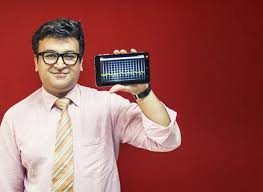NEW DELHI : For ordinary folk, visits to Delhi’s hospitals were a nightmare of waiting in endless queues, in smelly, sweaty hallways that buzzed with mosquitoes. No longer!
But now spotless and air-conditioned clinics boasting innovative diagnostic technology and sharply-dressed doctors are opening, bringing healthcare into the 21st century. What’s making them happy is the sparkling free clinics ( there will soon be about a hundred of them) developed by the Delhi government in mostly low-income neighbourhoods.
Delhi’s millions of poor are long used to the traditional state-run hospitals, often stretched to breaking point, where patients face long delays for even minor treatment and are forced to share beds.
The Delhi government allocated an initial Rs 47,400 million or so (S$1.1 billion) in this year’s budget for the clinics. Chief Minister Arvind Kejriwal had promised at the 2015 elections to improve healthcare and ease the burden on its ageing hospitals.
Swasthya Slate
Patients at these clinics may see a newly invented device that conducts 50 common medical tests from a single blood sample, including sugar levels and cholesterol. In a city where diabetes, dengue, hepatitis, typhoid and other illnesses are common, the small, rectangular device provides swift diagnosis – thereby allowing for early treatment.
Results of most of the tests are known within two minutes and are uploaded onto an IT cloud for access by patients and their doctors on their smart phones and the clinic’s tablets.
“II (information technology) does make a pretty significant difference,” said Indian biomedical engineer Kanav Kahol, who developed the device that he hopes will soon be installed in all of the other new clinics.

It was aimed at easing India’s overburdened public health system, but Kahol said other countries have also expressed interest in the machine, which costs about US$1,000 to buy. “We were very surprised by the fact that what we had developed for India, people all over the world were actually looking for,” the 37-year-old said of the device called the swasthya (health) slate.
India spent just 1.4 per cent of gross domestic product (GDP) on healthcare in 2014, according to the World Bank, lower than neighbouring war-torn Afghanistan on 2.9 per cent.
“As a result, Indians avoid the state-run system if they can, with many flocking to private clinics and hospitals. But a consultation with a private doctor can cost 1,000 rupees (S$20), a huge sum for millions living on less than two dollars a day. More than 60 per cent of the population’s out of pocket expenses goes on medicines and healthcare, the government estimates,” says a report by AFP
Although doctors working at the clinics say they are making a difference, they also concede to a range of teething problems, including dealing with Delhi’s patchy infrastructure.
“Sometimes the internet is slow or there is no electricity. Some patients insist on handwritten prescriptions as they are not used to computers and tablets,” said doctor Alka Choudhary.
“Also at the moment the clinics are not digitally linked with the big hospitals so the medical records of a patient cannot be retrieved if he is admitted there in a case of emergency.
“It’s still early days. It is not a perfect system but at least we have made a positive start.”


